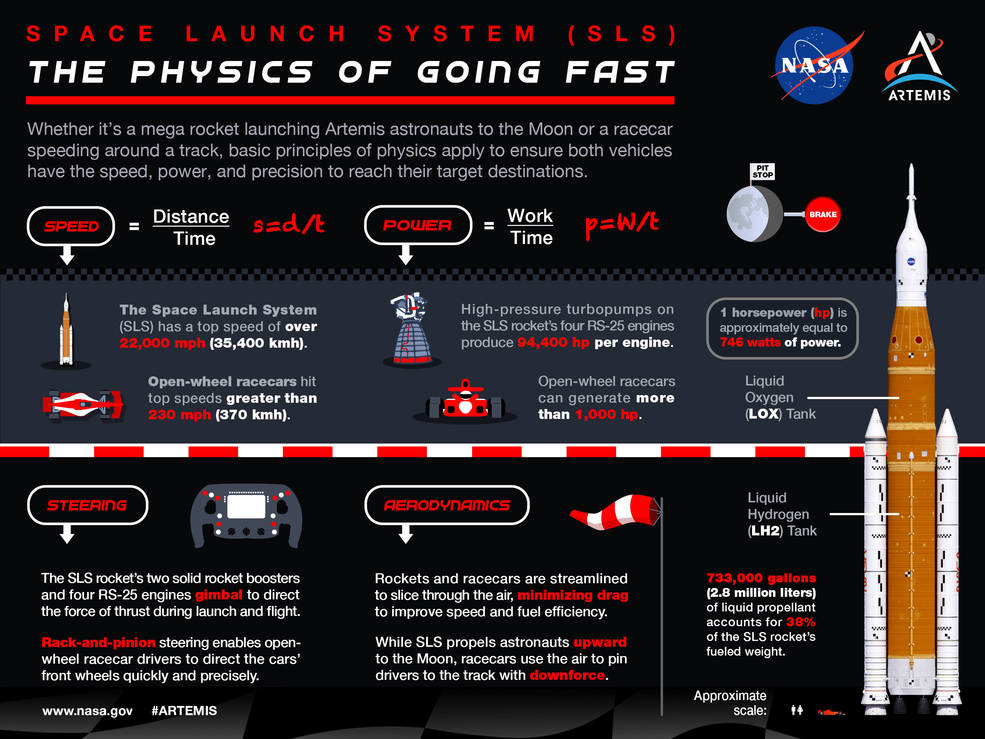When NASA’s Space Launch System (SLS) rocket launches the first astronauts for their journey around the Moon during Artemis II, its four RS-25 engines and two solid rocket boosters will produce more than 8.8 million pounds of thrust at liftoff. Launching mega rockets like SLS beyond low-Earth orbit and driving high-performance racecars around a track require a key understanding of physics, aerodynamics, and precision.
NASA is working to land the first woman and first person of color on the Moon under Artemis. SLS is part of NASA’s backbone for deep space exploration, along with Orion and the Gateway in orbit around the Moon, and commercial human landing system. SLS is the only rocket that can send Orion, astronauts, and supplies to the Moon in a single mission. Through Artemis, NASA will land astronauts on the Moon to advance long-term lunar exploration and scientific discovery, and inspire the Artemis Generation.
Image credit: NASA/Kevin O’Brien



























